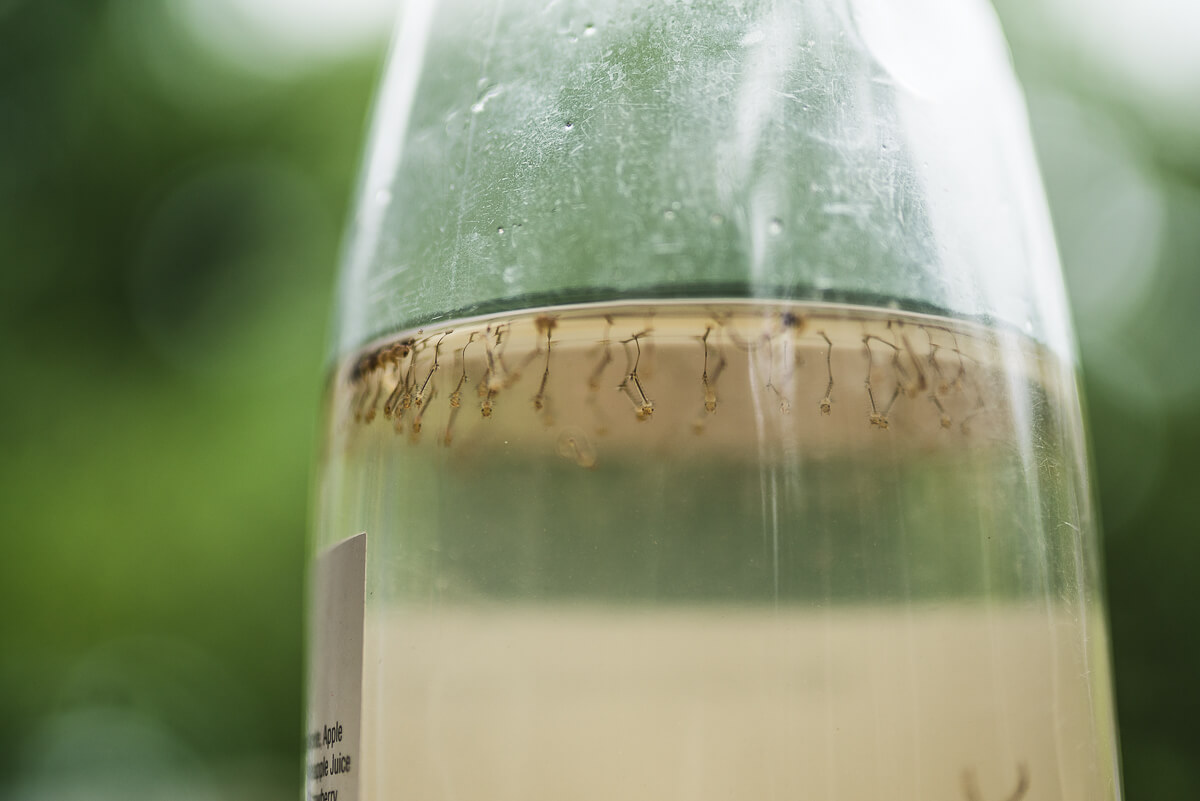Entomological Component

Objectives
To measure the abundance of larvae and mosquitoes in research sites over the course of the study.
To describe the variety of water containers in which mosquito larvae are found.
Methodology
Evaluation of dengue vector infestation and abundance
Twice per year, immature mosquitoes will be collected from water containers placed in schools and houses. Once per year, adult mosquitoes will be collected using backpack aspirators inside households. Based on the number of immature mosquitoes collected, the number of pupae per person and other related indicators will be calculated. Water-holding containers in schools and other human environments will be identified, counted and classified.
Vector-control methods deployed
9528 traps have been produced and deployed. This includes:
- 3228 medium size traps and 6300 small size traps;
- Three traps (one medium and two small) have been deployed per household in 3158 households, in 20 implementation villages;
- Two traps (medium) have been placed in each room in 161 rooms in 16 schools.
20 400 guppy fish have been distributed to guppy banks. This has been accompanied by the training of 100 school teachers, 94 community health workers and six health centres on how to rear, maintain and distribute guppy fish. The guppy fish distribution has been as follows:
- Guppy fish bank at schools: three jars at 16 schools;
- Guppy fish bank at communities: six jars in 20 communities;
- Guppy fish bank at health centres: 20 jars at six health centres;
- Distribution of guppies to each household through students;
- Distribution of guppies to each household through health centre visits;
- Distribution of guppies via community health workers in communities.
Preliminary findings
One year after the study had begun, the mosquito indices in the intervention areas were significantly lower than in the control. Essentially, the interventions are reducing the numbers of mosquitoes. This was determined based on the percentage of water-holding containers infested with mosquito larvae and/or pupae around and in households, and on the mean number of Aedes aegypti and Aedes albopticus pupae and female adults.
There is not a significant difference in entomological indices between intervention arm 1 (biophysical interventions and empowerment interventions) and arm 2 (biophysical interventions only). However, although this is not captured by the methodology, the research team strongly believes that the positive results would not have been achieved without extensive community engagement.
A total of 353 548 female Aedes were trapped between May to October 2019.
There were fewer cases of dengue in the two intervention arms compared to the control arm during the January–October 2019 period.

